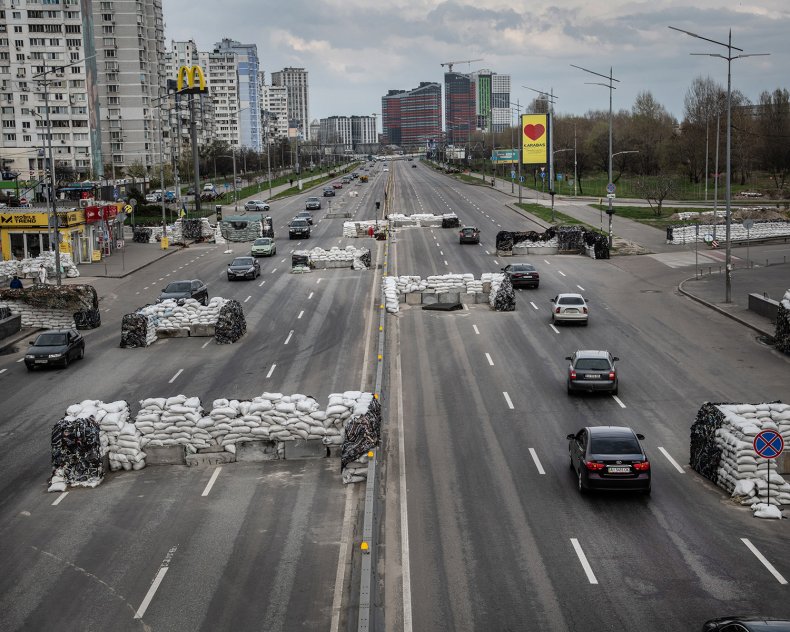[ad_1]
Photojournalist Lynsey Addario could not have been a closer witness to the devastation of the war in Ukraine when Russian forces fired mortar shells as civilians tried to evacuate from Irpin, near Kyiv, on March 6.
A round exploded only feet in front of her and her colleague, leaving four members of a family, including two children, dead on the street.
“That was extremely difficult because we were both in shock,” she told Newsweek, “it’s rare as a journalist that you are actually in the attack that you end up photographing.”

Justyna Mielnikiewicz/ MAPS for WSJ
She had previously defended her controversial image after it was published on the front page of The New York Times, as an important testament to Russian aggression.
It is one of a collection of striking pictures by photojournalists in a newly released photo book, Relentless Courage: Ukraine and the World at War, published by Blue Star Press, which documents the human cost of President Vladimir Putin’s full-scale invasion.
“A lot of the policies and punishments that have been imposed on Putin have been because of the testimonies and the documentation of journalists on the ground, whether it’s from the war crimes in Bucha to the intentional targeting of civilians,” she said.
“I’ve covered war for over two decades and I’ve rarely seen people pay attention to my coverage the way they have in Ukraine,” she said.
Connecticut-born Addario received a Courage in Journalism award from the International Women’s Media Foundation this year and was part of a New York Times team that won a Pulitzer prize in 2009 for their coverage of Afghanistan and Pakistan.
Unflinching in their depictions of the impact of war, the book’s images from five featured photojournalists and other photographers document death, evacuations, burials and the trauma endured by Ukrainians.

Carol Guzy

Svet Jacqueline
Justyna Mielnikiewicz was in Dnipro on February 24 when the war started. “It was like the whole country within a day was just hit,” she told Newsweek. “The scale of the attack was so overwhelming.”
Covering the war for The Wall Street Journal, she said that after the initial shock of the invasion, she noticed Ukrainians got to work organizing themselves with volunteer centers being set up.
There were logistical difficulties in getting around, not helped by gasoline shortages and the dangers posed by the fact that the “whole country had become a frontline.”
“It’s important to show people as individuals and not some kind of anonymous mass representing some abstract suffering. I believe in showing individual stories,” Mielnikiewicz said.
“In a time of war, I think you just tune into other people’s emotions,” she said. While she saw herself as a chronicler of the war, it was still important to help where she could. “I’m still a human.”
Meanwhile, another of Addario’s images in the book was taken right at the start of the war during a mass mobilization of volunteers. Flanked by two women holding guns is a teacher called Yuliya looking up in tears.

LYNSEY ADDARIO

Carol Guzy
“I asked her, ‘why are you crying?’ And she said, ‘I’m scared. I’m scared for my country. I’m scared for my future,'” said Addario.
“It was incredible to me to see a teacher go and despite her incredible fear, to volunteer and she’s still in the military,” she said.
“I have witnessed that sort of resilience and determination to fight against the Russians from the very beginning and that’s what sort of made this war unique for me.
“As well as this incredible bravery, people are so unified and they are totally determined to not let Russia take over their country.”
[ad_2]
